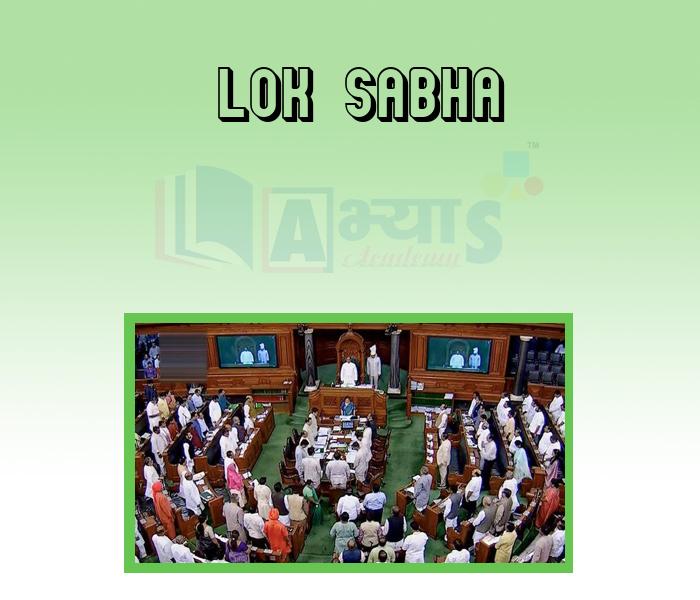Lok Sabha











Lok Sabha
Lok Sabha - House of the People
Parliamentary institutions in India, with all their modern ramifications, owe their origin to India's British connections. Until 1853, there was no legislative body distinct from the Executive. The Charter Act of 1853. for the first time provided some sort of a legislature in the form of a 12 member Legislative Council. The Indian Independence Act, 1947 declared the Constituent Assembly of India to be a full sovereign body. Apart from being a Constitution drafting body, it also assumed full powers for the governance of the Country. With the coming into force of the Constitution on 26 January 1952, the Constituent Assembly functioned as the Provisional Parliament until the first Lok Sabha, then known as the House of People, constituted following General Elections in 1952. Lok Sabha, the Hindu nomenclature was adopted on 14 May, 1954
The Lok Sabha is composed of representatives of people chosen by direct election on the basis of Universal Adult Suffrage.
The term of the Lok Sabha, unless dissolved, is five years from the date appointed for its first meeting However, while a proclamation of emergency is in operation, this period may be extended by Parliament by law for a period not exceeding one year at a time and not extending in any case, beyond a period of six months after the proclamation has ceased to operate.
How many members are there in the Lok Sabha of Madhya Pradesh ? | |||
| Right Option : A | |||
| View Explanation | |||
The Indian Constitution provides that the maximum strength of the Lok Sabha be ____________________ members. | |||
| Right Option : B | |||
| View Explanation | |||
The allocation of state wise seats in the Lok Sabha is based on the 1971 census. What year will this allocation last ? | |||
| Right Option : B | |||
| View Explanation | |||
Students / Parents Reviews [10]
I have spent a wonderful time in Abhyas academy. It has made my reasoning more apt, English more stronger and Maths an interesting subject for me. It has given me a habbit of self studying

Yatharthi Sharma
10thAbhyas is a complete education Institute. Here extreme care is taken by teacher with the help of regular exam. Extra classes also conducted by the institute, if the student is weak.

Om Umang
10thBeing a parent, I saw my daughter improvement in her studies by seeing a good result in all day to day compititive exam TMO, NSO, IEO etc and as well as studies. I have got a fruitful result from my daughter.

Prisha Gupta
8thIt has a great methodology. Students here can get analysis to their test quickly.We can learn easily through PPTs and the testing methods are good. We know that where we have to practice

Barkha Arora
10thAbout Abhyas metholodology the teachers are very nice and hardworking toward students.The Centre Head Mrs Anu Sethi is also a brilliant teacher.Abhyas has taught me how to overcome problems and has always taken my doubts and suppoeted me.

Shreya Shrivastava
8thIt was good as the experience because as we had come here we had been improved in a such envirnment created here.Extra is taught which is beneficial for future.

Eshan Arora
8thAbhyas Methodology is very good. It is based on according to student and each child manages accordingly to its properly. Methodology has improved the abilities of students to shine them in future.

Manish Kumar
10thMy experience was very good with Abhyas academy. I am studying here from 6th class and I am satisfied by its results in my life. I improved a lot here ahead of school syllabus.

Ayan Ghosh
8thMy experience with Abhyas is very good. I have learnt many things here like vedic maths and reasoning also. Teachers here first take our doubts and then there are assignments to verify our weak points.

Shivam Rana
7thA marvelous experience with Abhyas. I am glad to share that my ward has achieved more than enough at the Ambala ABHYAS centre. Years have passed on and more and more he has gained. May the centre flourish and develop day by day by the grace of God.
